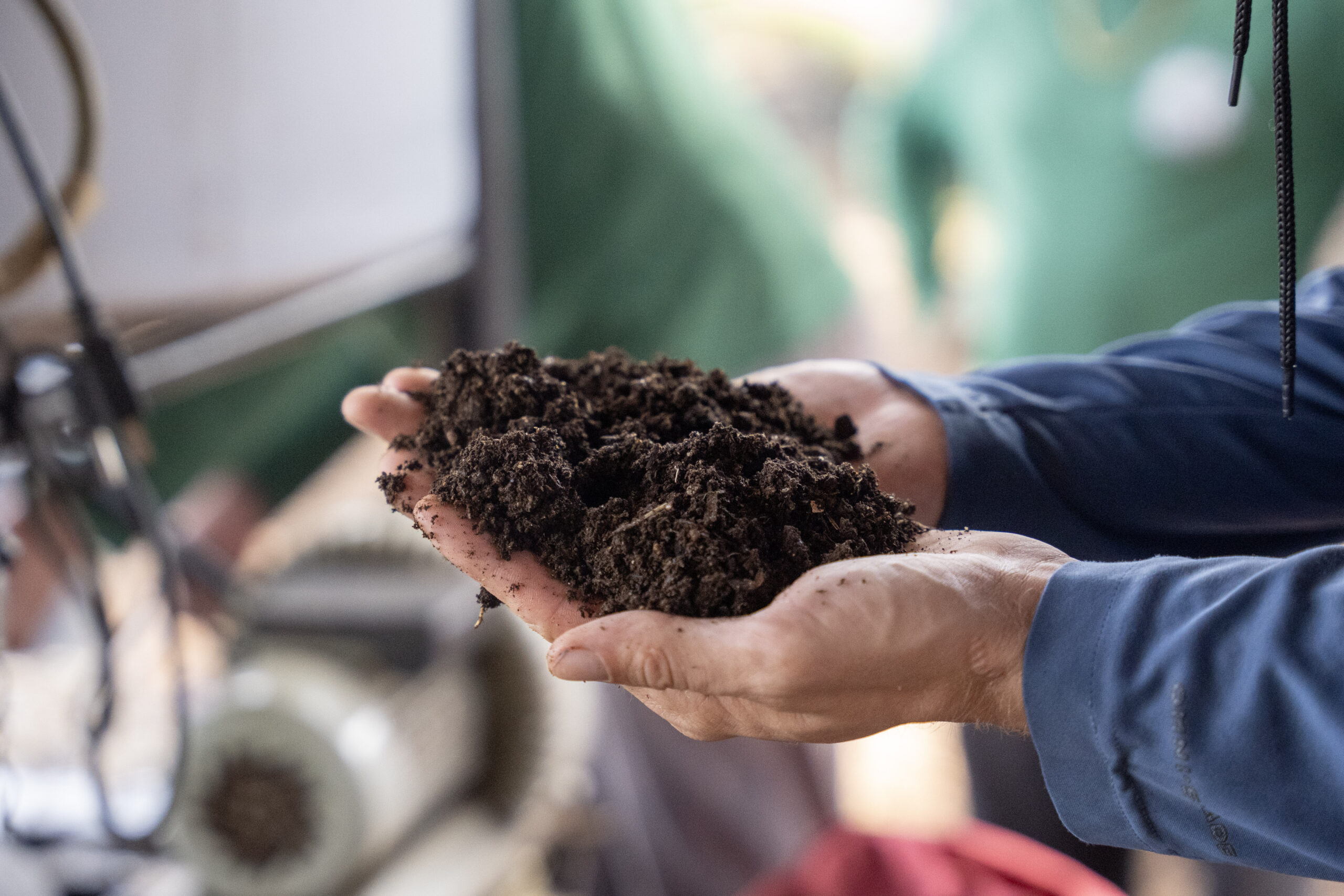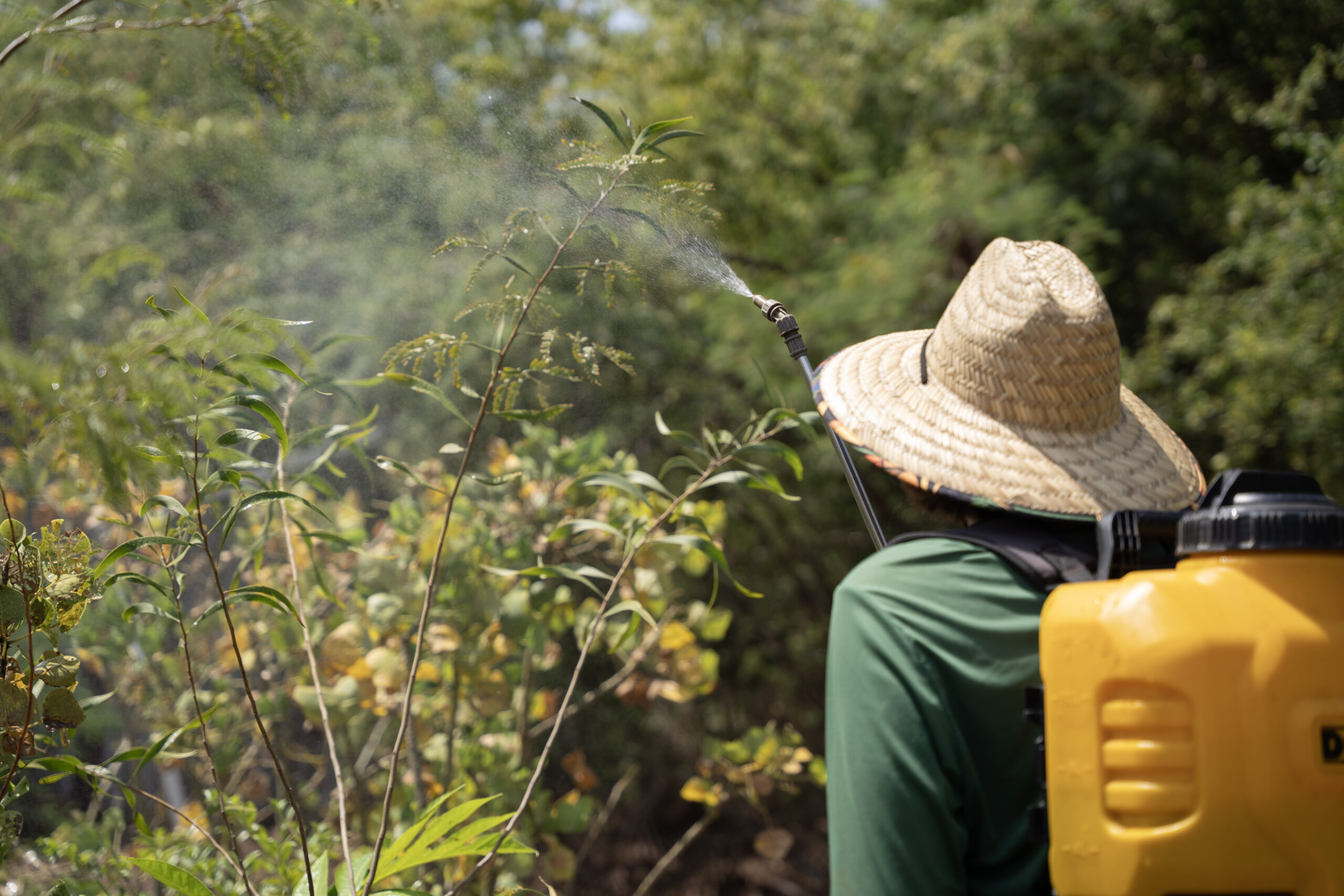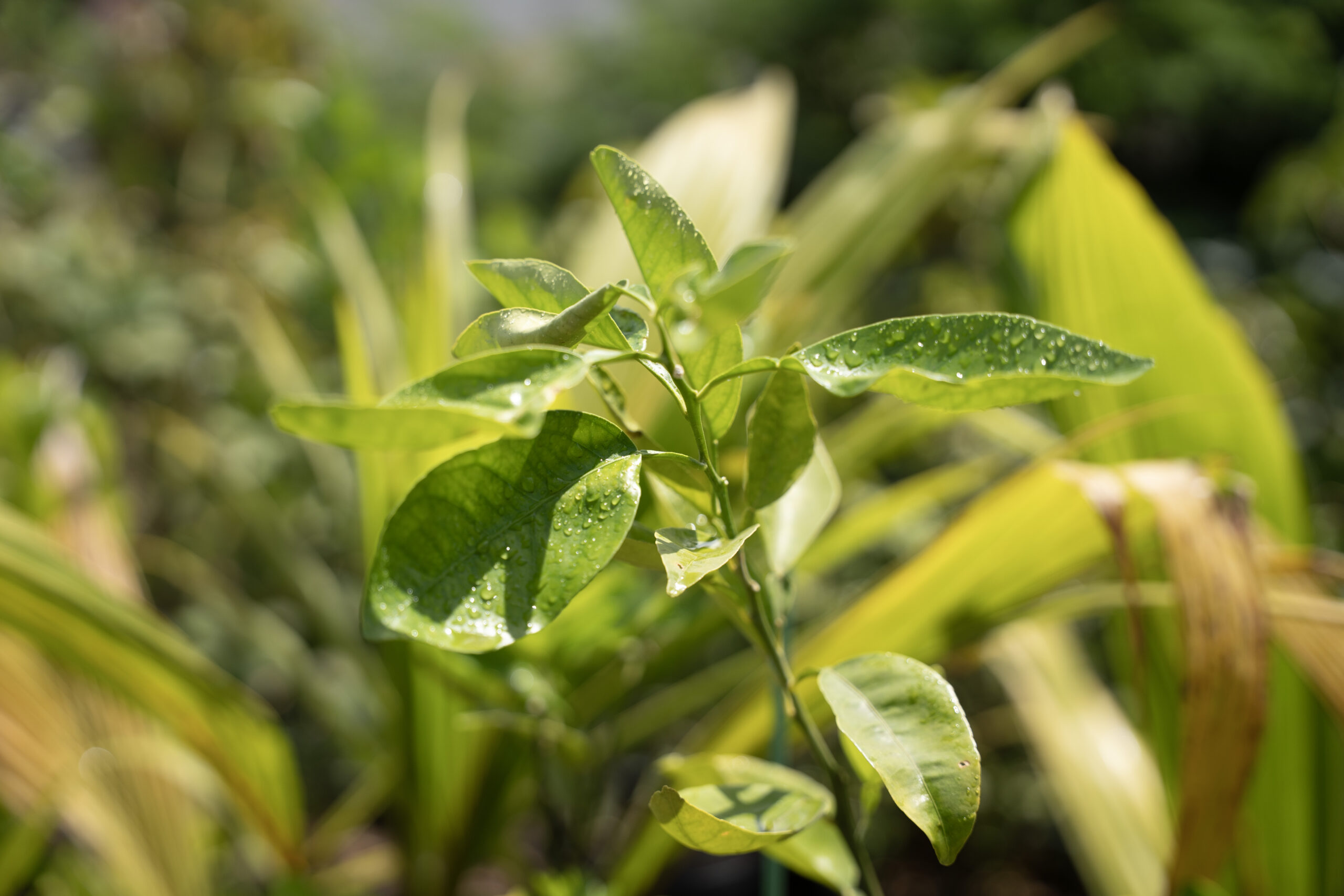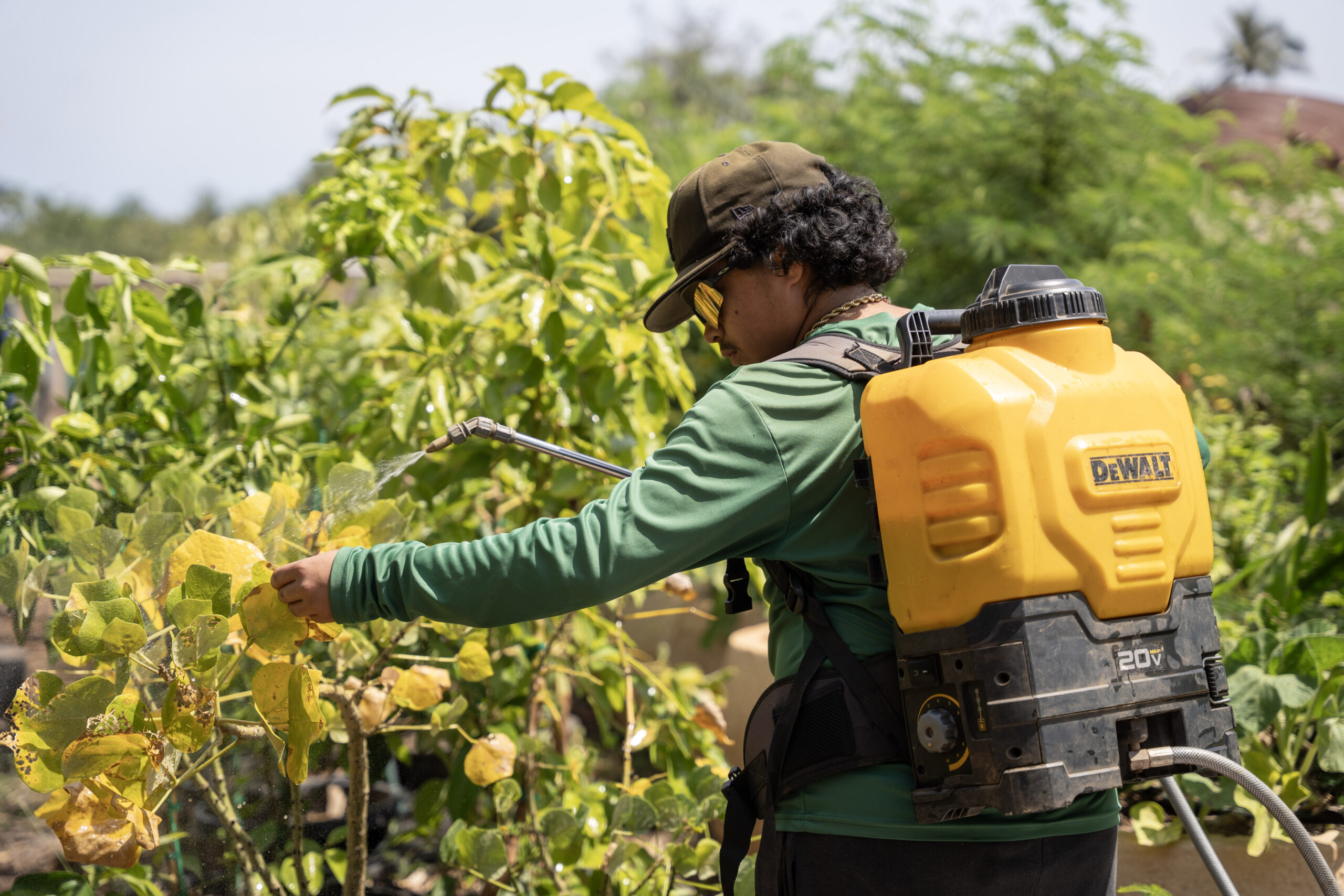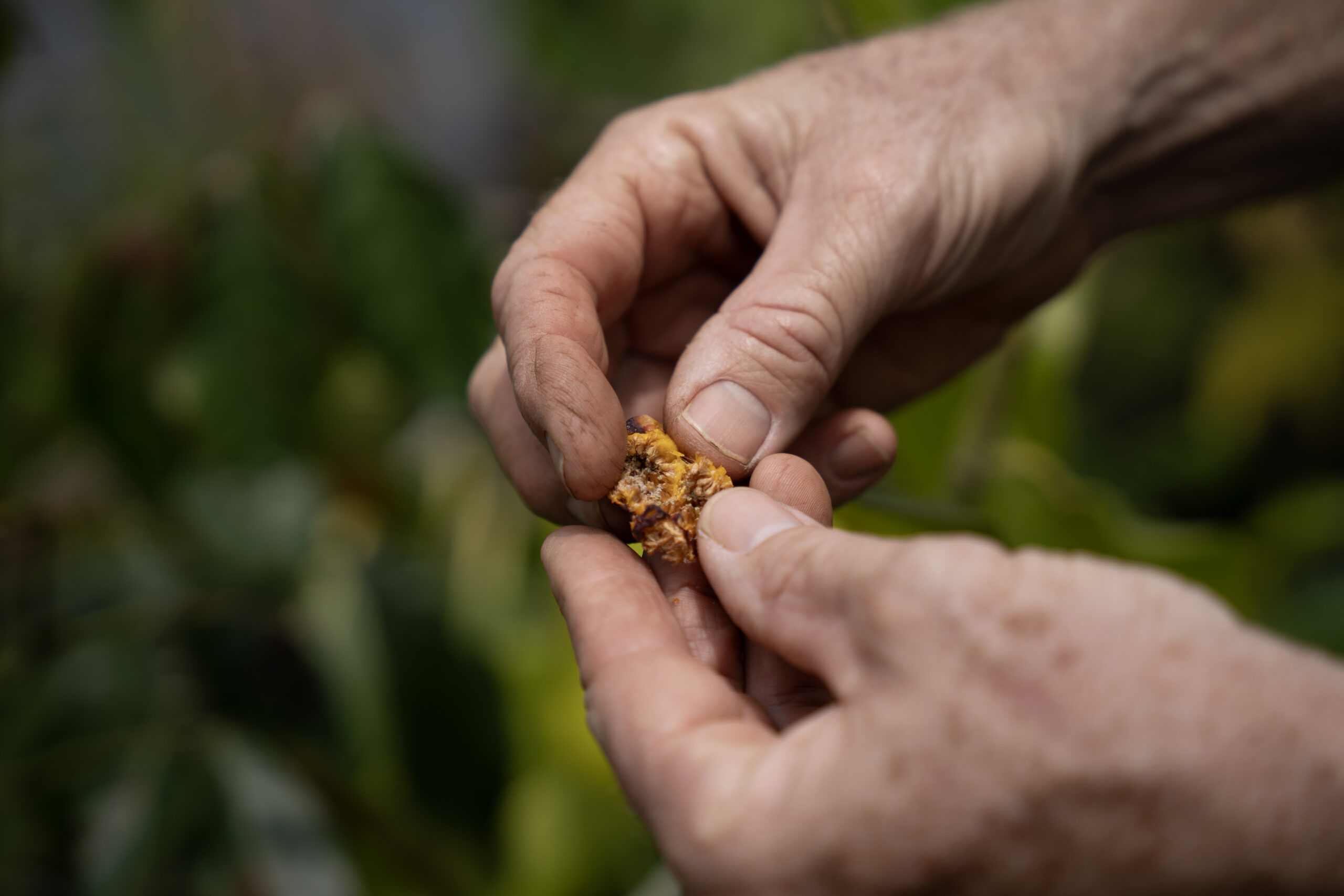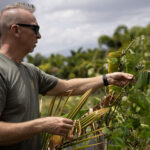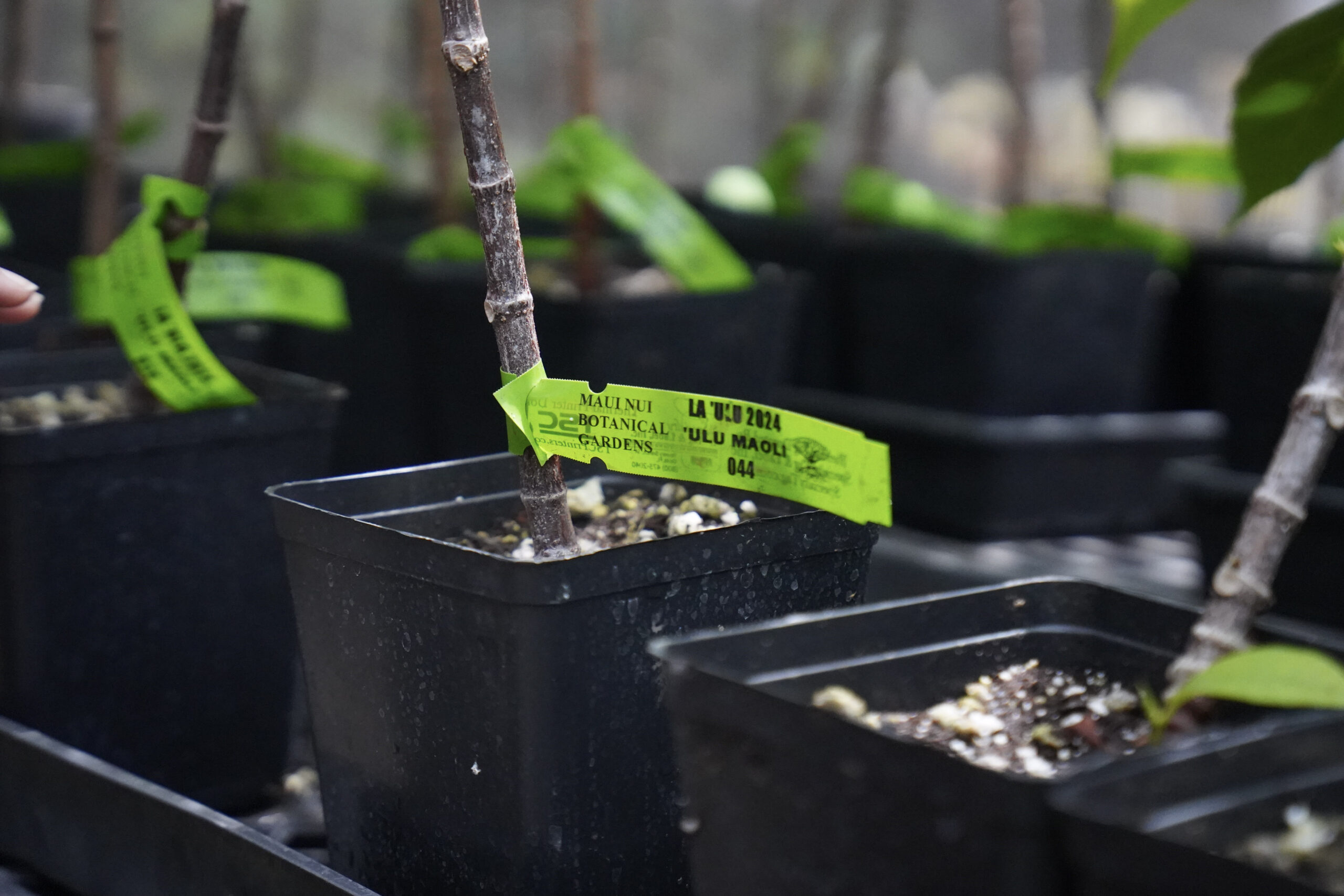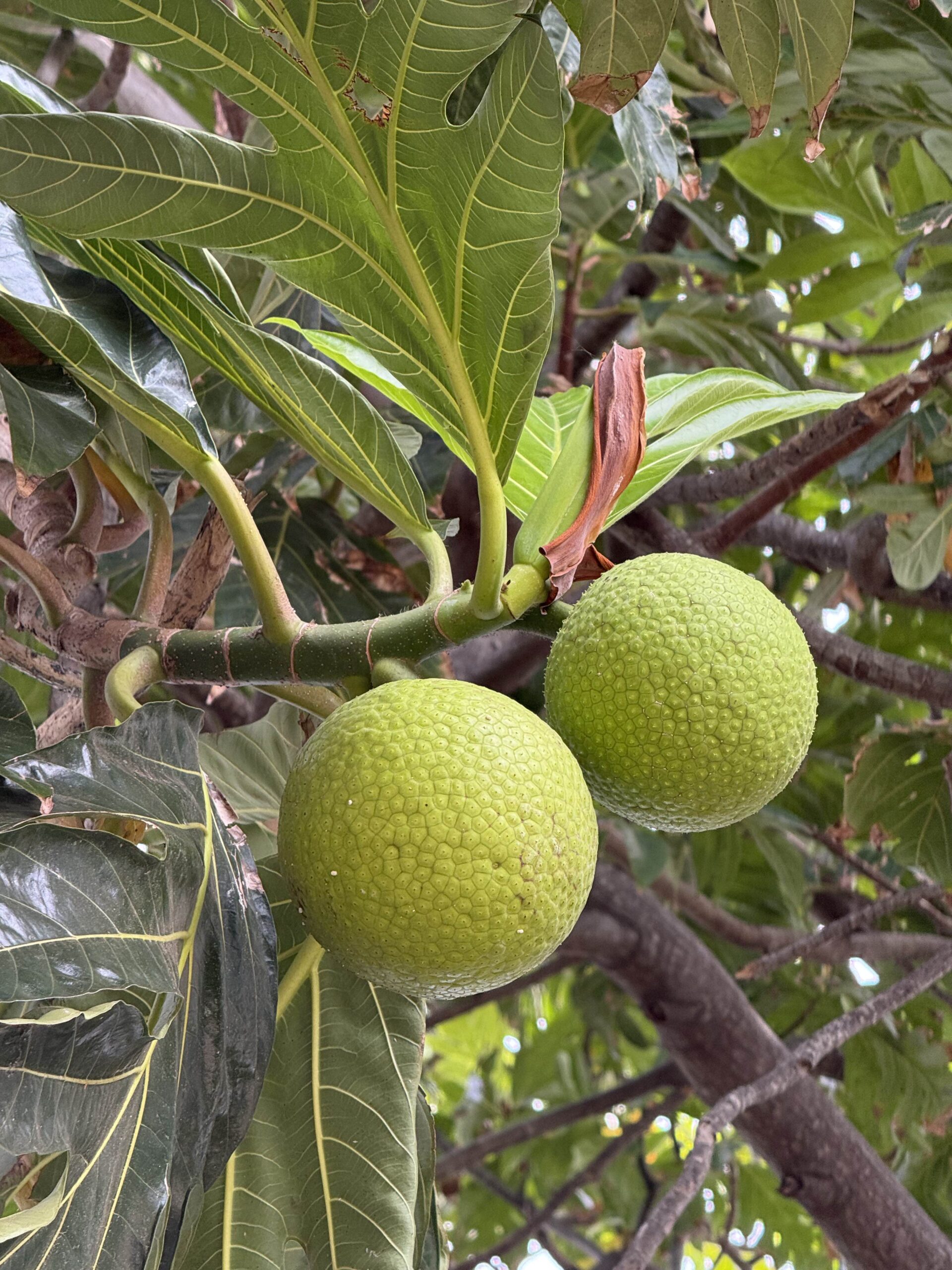 Hawai‘i Journalism Initiative
Hawai‘i Journalism Initiative‘From the soil up’: An islandwide network of volunteers nurtures trees for burned Lahaina, Kula

LAHAINA — To mark the birth of their first child, Sienna, in 2018, Kevin and Kelly Williams planted a tangerine tree in their Lahaina yard. When their second child Malia arrived in 2020, they added a lime tree.
But the trees never had a chance to bear fruit before the Aug. 8, 2023 wildfire destroyed them, along with the Williams family’s home, their property management business and most of the town.
HJI Weekly Newsletter
Get more stories like these delivered straight to your inbox. Sign up for the Hawai‘i Journalism Initiative's weekly newsletter:
Now, on their new property in Ukumehame about 15 minutes south of Lahaina, the family is growing a much bigger bounty — about 220 trees, all native species, that one day will return to the backyards of families like theirs.
“Absolutely amazing to be able to think one day we can drive through Lahaina and see the trees that we helped raise,” Kevin Williams said.
Over the past year and a half, a sprawling network of volunteers, local farmers, nurseries and hotels have stepped up to host thousands of young trees growing in pots that will be replanted in Lahaina through the Treecovery Hawai‘i project.
Since launching in November 2023, the initiative has bloomed into 6,200 trees being cared for at 25 grow hubs, with about 160 already replanted at the handful of homes that have been rebuilt in Lahaina and Kula. While displaced families focus on returning to their homes, the volunteers are making sure the trees and the soil are nurtured and ready to shade and feed the community for years to come.
“It really does a lot to people’s minds and hearts when they see growth and they see that rebirth of the land,” said Duane Sparkman, founder and president of Treecovery and chair of the Maui County Arborist Committee. “Restoring the ‘āina from the soil up is what we have to do.”
THE ROOTS
When 59-year-old Ekolu Lindsey talks to relatives from his dad’s generation about Lahaina, the smell of mangos comes to mind. Everyone had their favorite fruit trees in Lahaina, and oftentimes they were the ones in their own yards, said Lindsey, who lost his Front Street home in the fire.

“All those stories, it’s the memories of home. It’s all part of who we are as people,” said Lindsey, a Treecovery board member and head of Maui Cultural Lands, a nonprofit that works to protect and restore Hawaiian resources across the island.
Lahaina was historically home to a canopy of fruit trees, including breadfruit, which gave rise to the name Malu ‘Ulu o Lele, “the shaded breadfruit grove of Lele.” They helped create a cooler climate, capture rainwater and mitigate soil erosion, independent researcher Adam Keawe Manalo-Camp wrote in the Office of Hawaiian Affairs’ “Ka Wai Ola” publication. The removal of breadfruit trees and diversion of streams to pave the way for sugar cane production in the mid-1800s dried up the once productive landscape and opened the door for invasive species.
The 2023 fire again razed the trees of Lahaina — about 21,000, according to Treecovery’s estimates — and burned so hot that it likely killed microbes in the soil as deep as 18 inches underground, Sparkman said. In Kula and Lahaina, federal workers scraped 6 inches of soil off the top of each property and tested it for contaminants before people were allowed to rebuild.
Struck by how barren the land was, Sparkman and his team launched Treecovery with the goal of growing 30,000 trees to replace what Lahaina lost. Lindsey sits on the board along with Matthew Murasko, Rodger May and cultural adviser Archie Kalepa.
The idea was to establish grow hubs where trees could be nurtured until residents were ready to plant. The Royal Lahaina Resort, where Sparkman is the chief engineer, served as a staging site before the very first grow hub opened with 125 fruit tree saplings at the Marriott’s Maui Ocean Club in April 2024.
The network grew to nearly every corner of the island, from the Kā‘anapali Beach Resort to the Fairmont Kea Lani to the Kahului Airport and independent growers in East Maui. It’s a labor of love where the on-site workers or volunteers water, weed and transfer the plants to larger pots as they grow.
Treecovery takes requests for trees on their website, buys them from local nurseries and transports them to the grow hubs where they are cared for and labeled with the names of the families they will be donated to, according to Murasko, an entrepreneur, product designer and brand builder who met Sparkman while volunteering in Honokōwai Valley 17 years ago. Murasko said they’ve raised about $600,000 and that they pay full price for the trees and pots to help support local businesses. The trees cost about $100 each but can get as expensive as $2,000 for a 65-gallon mango tree or $3,000 to move and install a large palm tree, Sparkman said.
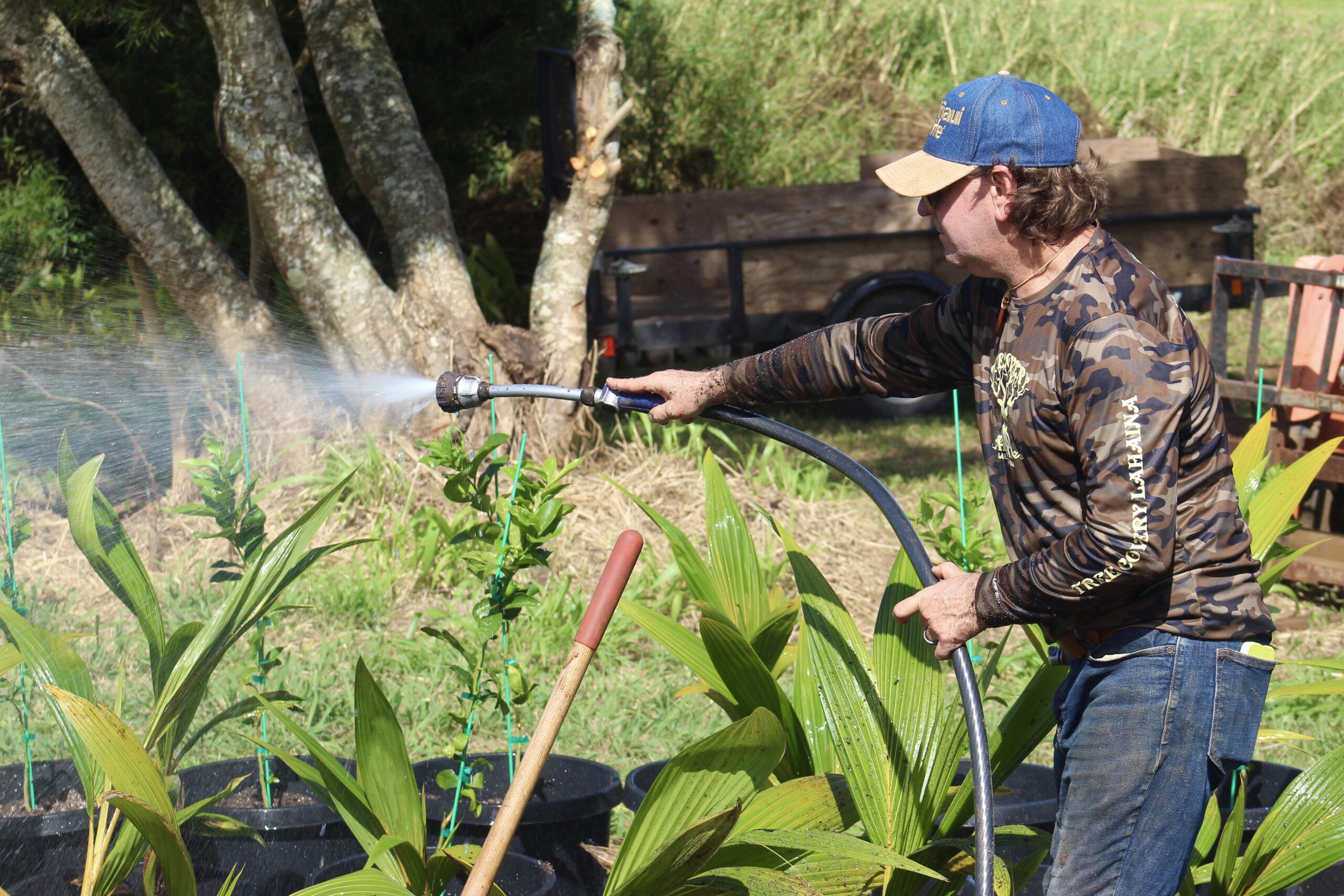
So far, the group has provided 85 trees for one 27-acre home in Kula to replace those planted by the owner before the Aug. 8, 2023 wildfire that destroyed 26 structures and burned nearly 700 acres Upcountry.
The group also has supplied 75 trees for eight homes in Lahaina. One of those homes had eight large palm trees planted with the help of cranes, while the trees for the other homes were either planted by the homeowners or with the help of volunteers, Sparkman said.
There are a variety of trees, including native species like koai‘a and ‘a‘ali‘i; fruit trees like Mapulehu mango, dwarf avocado, peach and citrus; and flowering trees such as plumeria and puakenikeni.
Nine more homes in Lahaina and one in Kula have requested trees in the past month. Treecovery is working to fill their requests.
Sparkman, a longtime landscaper and former scientific biological technician at Haleakalā National Park who has been honored for his organic landscaping practices, said Treecovery wants to return the natural system of healthy microbes into the soil.
The steady recovery of the iconic 150-year-old banyan tree is proof that it can work. Sparkman said it’s grown “leaps and bounds” more than they expected with the help of 500 gallons of microbial life, rich with fungi and bacteria that trees need and pests can’t survive in.
“It takes years for nature to put it back, but man can help it by pulling these indigenous microbes and moving it for nature,” he said.
A critical part of the effort to restore the soil is Jonny Klassen, the owner and operator of Brew Hut Maui. Klassen visits the grow hubs every other week and some homes once a month to apply a special microbial brew that will help the plants grow and thrive.
On a sunny Thursday morning behind the Hyatt Regency in Kā‘anapali, Klassen and two of his workers, 18-year-old Jomicah Roman and Klassen’s 17-year-old stepson Skyler Cereceres, filled three backpack sprayers with the muddy mixture and walked the rows of milo, koa, wiliwili, coconut and other young trees.
Each recipe is concocted specifically for the location. At the Hyatt Regency in Kā‘anapali, for example, Klassen combines grass, wood chips and other green waste from the hotel with food scraps that are then composted into a dark brown soil and mixed with water and food for the microorganisms — in this case, it’s dead insects to help them learn to consume pests and seaweed to create more fungi for the soil.
Fungal-dominated soil is good for trees; for other plants he might add more sugary foods that would produce bacteria. Both are crucial in the soil, helping to break down organic matter and provide nutrients to the plants. Good soil structure can also help prevent runoff and erosion, and Klassen said if soil health isn’t a focus as Lahaina rebuilds, the landscape will suffer.
“We’re putting all of this time and money and effort into rebuilding,” Klassen said. “But if we don’t … also think about our shoreline erosion and our water management, then all of that is going to be somewhat for nothing for the next generations.”
THE BRANCHES
When the Williams family lost their property in the fire, they couldn’t afford to buy a home, so they split the cost of a 6.6-acre property in Ukumehame with another fire-displaced family in January 2024. They’d never been farmers before, but they wanted to do something to help the community and heard about Treecovery at a birthday party.
Sparkman gave them little orange flags and let them pick out different trees for each family member. The Williams family cleared a quarter-acre of their property and brought in 170 trees that later increased to 220. Every so often, they take pictures of their two daughters next to the trees they picked to track their growth.
“Everyone’s trying to do what they can with what they have, so that’s our small contribution,” Kevin Williams said. “And when the families in Lahaina, their homes are rebuilt and they’re ready to move back in, they’ll at least have a mature tree that’s a few years old, rather than just a fresh keiki tree.”

Trees made their Lahaina home beautiful and livable, he said. They had nearly 30 varieties of fruit, vegetables and flowers, including a big kukui nut tree that provided shade, Kelly’s abundant lemon tree, lilikoi that “just took off” and plenty of papaya and starfruit to eat.
“I think everyone first considers the structures and the buildings, of course, and the homes, but secondly, are the trees that provide all the fruit and the shade and the greenery,” Kevin said. “To be able to grow fruit and have that with your family or share with your neighbors … it’s just a way that ties the community together in kind of a beautiful way.”
Last year, after the birth of their son in February 2024, the Williams family restarted the tradition of planting a tree for each child, a legacy from Kevin’s father, who planted a pear tree for Kevin and an apple tree for his older brother. For their son Landon, Kevin and Kelly chose a mango tree.
Over an hour away Upcountry, David Clements’ farm serves a special purpose as the acclimating grounds for the trees that come from growers in rainy East Maui. Clements currently has about 800 potted trees on a quarter-acre of his property, though he had as many as 1,600 at one point. The sunny days and cool nights help the plants “get used to getting blasted by nothing but sunshine,” so that the journey to Lahaina won’t be such a shock.
The selection at Clements’ grow hub includes a few prized pots of the banyan tree that were grown using an air-layering technique, which allows a new plant to be grown while attached to the parent plant. This makes the new plant behave as if it’s as old as the parent plant, preserving the maturity and allowing it to bear fruit sooner than a brand-new plant, Clements explained.
Clements married into a family that has actively farmed the land for 85 years, starting with an initial crop of cabbage planted by his wife’s grandfather. Over time, the farming operations have scaled back as the older generation aged and the younger generation found other jobs. A bartender at the Andaz Maui and a longtime friend of Sparkman, Clements grows palm trees on the property and said he had plenty of of sunshine, time and space to offer when he heard about Treecovery’s work.
He loves knowing that some of his trees end up in the backyards of local residents before they go to Lahaina, and thinks the connections made between the displaced families and the people who fostered their trees are priceless. Clements says “everyone feels a little lost in knowing that they can’t donate financially to make a huge difference,” but that every bit of help is meaningful.
“I know it’s not the biggest thing in the world to do for these folks that have lost everything, but if we can take this burden off of them and give them a little hope and give them a little reason to believe that other people are out here caring for them, I think that’s worthwhile,” Clements said.
Fledgling ‘ulu plants are also preparing for their future move to Lahaina at the nursery of Maui Nui Botanical Gardens in Kahului. Last year the organization purchased 42 ‘ulu trees that people could sponsor for donation to residents in Lahaina. Ten have found homes, and the rest are available for those who want them. Another 49 are awaiting sponsorship. The trees are a true maoli or native variety of ‘ulu from pre-European contact days, a “really desirable” species, said Executive Director Tamara Sherrill.
Sherrill said they will hold on to the trees for as long as people need, even though the trees are growing fast. Currently one tree takes up a gallon-sized pot; within two years, they could expand to pots of 3-5 gallons and require a couple of people to transport.
They also have ʻōhiʻa plants from wild varieties in Mauna Kahalawai, or the West Maui Mountains, that were collected by a Lahaina resident who fled the fire and saved a whole pot of seedlings that she donated to the botanical garden. The trees are mostly claimed and will be ready for distribution soon.
“It’s wonderful to think of even just one of these trees being something that gives people comfort or food or beauty in the future, even long after I’m gone,” Sherrill said. “That’s why we do this.”






